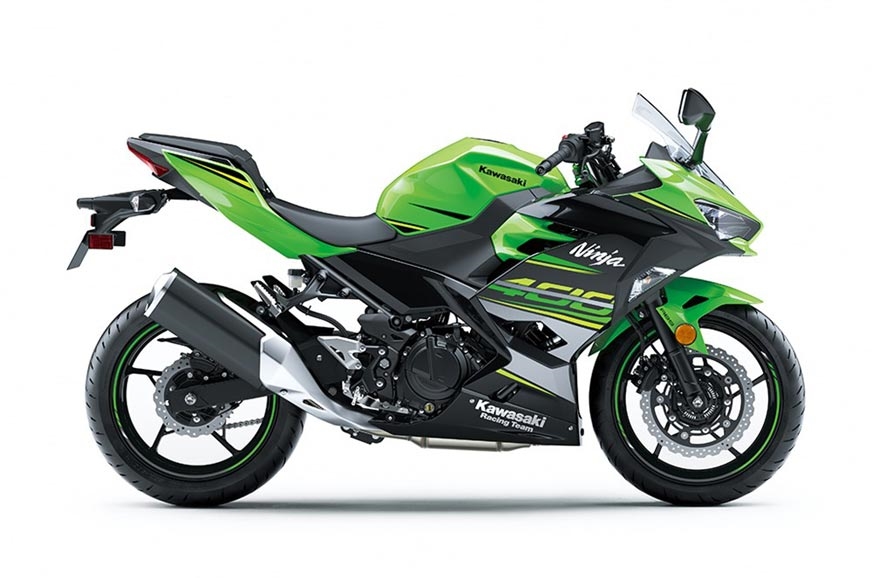More power
The most talked about aspect of the Kawasaki Ninja 400 is its new 399cc parallel-twin powerplant. The liquid-cooled motor develops 49hp at 10,000rpm and peak torque of 38Nm is made available at 8,000rpm. What’s interesting is the fact that the bike sold in India is more powerful than the Europe-spec Ninja 400 which has max power of 44.8hp. The reasoning for the difference in power output is the A2 license system. Although, the peak power output for an A2 license motorcycle is capped at 47hp, there’s also a clause that restricts maximum power-to-weight ratio to 0.20kW/kg and the Ninja 400 sold in Europe has a power-to-weight ratio of 0.19kW/kg. Since there’s no such restriction in India, we get the more powerful 49hp engine. Transmission duties are handled by a six-speed gearbox. It also gets a slip assist-enabled slipper clutch as standard fitment.
Weight check
One of the main challenges for Kawasaki engineers was to keep the Ninja 400’s weight under check, in comparison to the Ninja 300. And they did just that, with the India-spec Ninja 400 being just 1kg (kerb weight – 173kg) heavier than the Ninja 300, despite the addition of power and features. Instead of the semi-double-cradle chassis as seen on the Ninja 300, the new motorcycle gets a trellis frame which is lighter and has more rigidity. Kawasaki engineers have also employed lighter five-spoke alloy wheels and the fuel tank capacity has been reduced from the Ninja 300’s 17 litres to 14 litres on the Ninja 400.
A proper update
Kawasaki hasn’t just blessed the new Ninja 400 with a powerful motor, but has also endowed it with good cycle parts. The steering geometry has been revised, with a much more aggressive rake angle of 24.7 degree as compared to the Ninja 300’s 27 degree. The new trellis chassis and revised steering geometry should improve the handling dynamics of the bike; though, we will reserve our judgement until we ride it. The Ninja 400 features conventional telescopic front forks instead of USD forks and the fork diameter has been increased from 37mm (Ninja 300) to 41mm. A five-way preload adjustable monoshock with 132mm travel does duty at rear. Braking hardware has also been updated as the Ninja 400 features larger 310mm petal disc brake at front; dual-channel ABS comes as standard.
It wouldn’t replace the Ninja 300
In most international markets where the Kawasaki Ninja 400 has been launched, it has replaced the Ninja 300. However, Kawasaki India has confirmed that both the motorcycles will be on sale in our two-wheeler space. The primary reason for this is the fact that the Ninja 400 has been priced exorbitantly at Rs 4.69 lakh, whereas the Ninja 300 retails for Rs 3.60 lakh (both prices, ex-showroom). The Ninja 300, according to Kawasaki, is a motorcycle better suited for beginners while the Ninja 400 is targeted towards more experienced riders. Both the motorcycles are assembled by Kawasaki at its plant in Chakan.
Competition
The Kawasaki Ninja 400 ideally competes against motorcycles like the Yamaha YZF-R3, Benelli 302R and the single-cylinder KTM RC 390. However, the Rs 4.69 lakh (ex-showroom) pricing makes it uncomfortably close to the Kawasaki Z650 (Rs 4.99 lakh) and the Kawasaki Ninja 650 (Rs 5.49 lakh) both of which are much more powerful at 68hp and 65.7Nm from their 649cc parallel-twin motors. Although the Harley-Davidson Street 750 (Rs 5.25 lakh) and the Kawasaki Vulcan S (Rs 5.44 lakh) are classified as cruisers, they also come close to the Ninja 400 with respect to pricing.






































